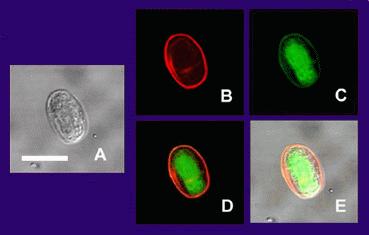edit] Prevention and Treatment
Treatment of drinking water for Giardia is ordinarily indicated in wilderness regions in North America,[citation needed], although at least four researchers disagree with this statement, including Robert W. Derlet, a professor at the University of California-Davis School of Medicine, Timothy P. Welch and Thomas R. Welsh of Tulane Medical School and the Children's Hospital of Cincinnati respectively, and Robert Rockwell, a widely quoted writer who is an engineer by training.[6][7][8][9]
In other areas frequented by hikers and campers, as well as places where many residents rely on untreated surface water, reliable prevention typically involves filtration with a filter that has a nominal 1-micrometer pore size. Most chemical treatment methods, including common point-of-use treatments such as iodine and chlorine dioxide, are considered unreliable in inactivating Giardia cysts. Water parameters such as temperature, turbidity, and dissolved solids may also affect the effectiveness of such treatments.
Giardia lamblia infection in humans is frequently misdiagnosed. Accurate diagnosis requires an antigen test or, if that is unavailable, an ova and parasite examination of stool. Multiple stool examinations are recommended, since the cysts and trophozoites are not shed consistently. Given the difficult nature of testing to find the infection, including many false negatives, some patients should be treated on the basis of empirical evidence; treating based on symptoms.[10]
Human infection is conventionally treated with metronidazole, tinidazole or nitazoxanide. Although Metronidazole is the current first-line therapy, it is mutagenic in bacteria and carcinogenic in mice, so should be avoided during pregnancy.[3] One of the most common alternative treatments is berberine sulfate (found in Oregon grape root, goldenseal, yellowroot, and various other plants).[citation needed] Berberine has been shown to have an antimicrobial and an antipyretic effect.[citation needed] Berberine compounds cause uterine stimulation, and so should be avoided in pregnancy.[citation needed] High doses of berberine can cause bradycardia and hypotension. [11]
| Drug | Treatment duration | Possible Side Effects |
| Metronidazole | 5-7 days | Metallic taste; nausea; vomiting; dizziness; headache; disulfiram-like effect; neutropenia |
| Tinidazole | Single dose | Metallic taste; nausea; vomiting; belching; dizziness; headache; disulfiram-like effect |
| Nitazoxanide | 3 days | Abdominal pain; diarrhea; vomiting; headache; yellow-green discolouration of urine |
Table adapted from Huang, White..[3]
Edit] Treatment in animals
Cats can be cured easily, lambs usually simply lose weight, but in calves the parasites can be fatal and often are not responsive to antibiotics or electrolytes. Carriers among calves can also be asymptomatic. Dogs have a high infection rate, as 30% of the population under one year old are known to be infected in kennels. The infection is more prevalent in puppies than in adult dogs. This parasite is deadly for chinchillas, so extra care must be taken by providing them with safe water. Infected dogs can be isolated and treated, or the entire pack at a kennel can be treated together regardless. Kennels should also be then cleaned with bleach or other cleaning disinfectants. The grass areas used for exercise should be considered contaminated for at least one month after dogs show signs of infection, as cysts can survive in the environment for long periods of time. Prevention can be achieved by quarantine of infected dogs for at least 20 days and careful management and maintenance of a clean water supply.
Edit] Microscopy


This picture shows multiple views of a single Giardia lamblia (intestinalis) cyst as imaged at different instrument settings by confocal microscopy.Bar = 10 micrometres.
(A) is the cyst imaged by transmission (differential interference contrast), only.
(B) is the cyst wall selectively imaged through use of fluorescent-labelled (TRITC) antibody that is cyst wall specific.
(C) is the cyst imaged through use of carboxy fluorescein diacetate, a viability stain.
(D) is a composite image of (B) and (C).
(E) is a composite image of (A), (B), and (C).
Under a normal compound light microscope, Giardia often looks like a "clown face," with two nuclei outlined by adhesive discs above dark median bodies that form the "mouth." Cysts are oval, have four nuclei, and have clearly visible axostyles. In spite of the common belief that all Eukaryotes have mitochondria, Giardia is one of the few that lack these organelles.
[